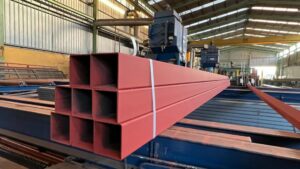The low-carbon steel production aimed at by most steel producers globally will be positive for the longer-term competitiveness of these companies. However, decarbonisation carries risks due to uncertainty regarding technologies, regulatory frameworks and funding, says Fitch Ratings.
The impact on operations will be limited in the next 3-4 years, as the technological shift will come after 2030.
Steelmakers will likely need to rely on governments’ participation in the form of direct funding and adjustment of regulatory frameworks to accomplish the green transition. This is because the steel industry is cyclical and volatile, and producers’ cash flows materially fluctuate during the economic cycle, Fitch says.
“In normalised conditions steel producers’ margins are relatively low. For example, in Europe median Ebitda margins have historically been around 3%. We also anticipate that the steel market will normalise from recent peaks over the next two to three years, returning profitability to normal,” the credit rating agency observes in a report seen by Kallanish.
“However, part of the investments assigned for carbon transformation may be viewed as part of a normal modernisation capex cycle when, for example, old blast furnaces are replaced by new ones or more likely by EAF-DRI facilities,” it adds.
The estimated 10-50% additional cost to produce green steel may severely affect producers’ margins. “However, we expect costs to continue to be reduced due to continuous operational improvements. In addition, a shift to new facilities will reduce maintenance costs. We expect that green steel will also be priced at a premium to carbon steel, mitigating cost pressures,” Fitch says.
The spike in energy prices will support the viability of decarbonisation and accelerate the transition to low-carbon production.
US steelmakers are better positioned to absorb the pressure decarbonisation investments put on leverage given their high reliance on scrap or DRI-based EAFs as their current production route.
“The need to decarbonise will be increased by rising carbon costs or the introduction of carbon costs across the globe, and high energy costs. Therefore, a shift to renewables and emissions reduction will also be a necessity to underpin longer-term competitiveness and achieve more sustainable positions on cost curves in the long-term,” Fitch concludes.
Adam Smith Poland






